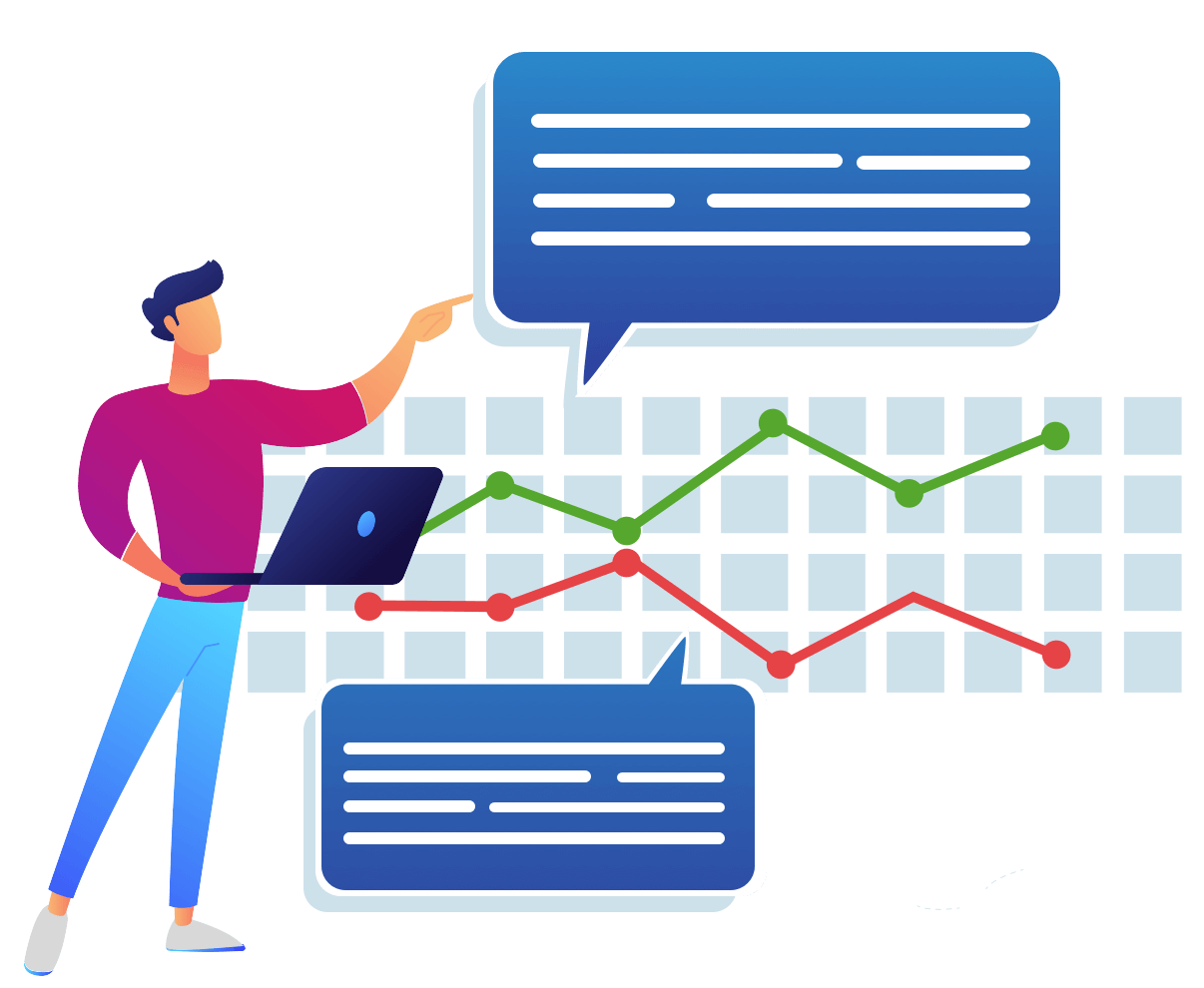Social media has evolved into a dynamic landscape where conversations about brands, products, and services happen in real-time. Understanding and harnessing the power of these conversations is crucial for businesses looking to thrive in the digital age. One powerful tool in achieving this is the Social Media Listening Report Examples.
Purpose of Social Media Listening Report Examples

1. Understanding Audience Sentiment
One of the primary objectives of social media listening reports is to gauge the audience’s sentiment. By understanding how people feel about a brand, product, or service, businesses can tailor their strategies to address concerns or capitalize on positive feedback.
2. Tracking Brand Mentions
Social media listening report examples provide insights into the frequency and context of brand mentions across various platforms. This helps businesses identify influencers, track the reach of their campaigns, and stay informed about the general perception of their brand.
3. Identifying Market Trends
Beyond monitoring brand-specific data, social media listening reports offer valuable information about broader market trends. By identifying popular topics and discussions within an industry, businesses can stay ahead of the curve and adapt their strategies accordingly.
Components of a Social Media Listening Report
To create an effective social media listening report, it’s essential to consider various components, including:
1. Data Sources
Determining the sources of data is crucial. Social media platforms, blogs, forums, and news articles are common channels to monitor. The inclusion of diverse sources ensures a comprehensive understanding of the online landscape.
2. Sentiment Analysis Tools
Using sentiment analysis tools helps categorize mentions as positive, negative, or neutral. These tools use advanced algorithms to understand the context and tone of the conversations.
3. Key Performance Indicators (KPIs)
Identifying and tracking key performance indicators allows businesses to measure the success of their social media listening strategies. Metrics such as engagement rates, sentiment shifts, and audience reach are integral to assessing performance.
Choosing the Right Social Media Listening Tools
In the vast landscape of social media listening tools, selecting the right ones for your business is crucial. Popular tools like AIM Insights, Hootsuite, and Mention offer unique features, but the choice should align with specific business objectives and budget constraints.
Overview of Popular Tools
- AIM Insights: Known for its robust analytics and real-time monitoring.
- Hootsuite: Offers a centralized platform for managing social media accounts and monitoring conversations.
- Mention: Ideal for small to medium-sized businesses, providing real-time alerts for brand mentions.
Criteria for Selection
When choosing a social media listening tool, consider factors such as the volume of data they can handle, the accuracy of sentiment analysis, and the ease of integration with existing systems.
Creating a Social Media Listening Strategy
Implementing an effective social media listening strategy involves several key steps:
1. Defining Objectives
Clearly defining objectives ensures that the social media listening efforts align with broader business goals. Whether it’s improving brand perception, addressing customer concerns, or identifying market opportunities, having a clear purpose guides the entire process.
2. Selecting Relevant Keywords
Choosing the right keywords is fundamental to accurate monitoring. Businesses need to identify terms related to their brand, industry, and products to capture relevant conversations.
3. Setting Up Monitoring Parameters
Establishing parameters for monitoring, such as specific timeframes and geographic locations, ensures that the social media listening report examples provide actionable insights tailored to the business’s context.
Interpreting Social Media Listening Data
The data collected through social media listening tools is valuable only when interpreted effectively. Here’s how businesses can make sense of the information:
1. Analyzing Sentiment Trends
Identifying patterns in sentiment trends helps businesses understand the impact of their marketing campaigns, product launches, or any other initiatives. It also allows for prompt responses to emerging issues.
2. Extracting Actionable Insights
Beyond sentiment analysis, businesses should focus on extracting actionable insights. These could include identifying emerging market trends, understanding customer preferences, or discovering opportunities for innovation.
Common Mistakes to Avoid
While implementing social media listening strategies, businesses should be cautious about common pitfalls:
1. Ignoring Certain Platforms
Focusing on popular platforms may lead to overlooking valuable insights from niche forums or emerging social media channels. A comprehensive approach ensures a holistic understanding of online conversations.
2. Overlooking Context in Sentiment Analysis
Understanding the context of conversations is crucial for accurate sentiment analysis. A seemingly negative mention may represent constructive feedback or a customer seeking assistance.
3. Failing to Adjust Strategies Based on Insights
Static strategies may become outdated in the fast-paced world of social media. Businesses should be agile, adjusting their approaches based on evolving trends and insights derived from social media listening reports.
Benefits of Regular Social Media Listening Reports
The regular generation of social media listening reports offers numerous advantages:
1. Proactive Crisis Management
By monitoring conversations in real-time, businesses can detect potential crises early on and take proactive measures to address issues before they escalate.
2. Improved Customer Engagement
Understanding customer sentiments enables businesses to engage with their audience more effectively, fostering positive relationships and loyalty.
3. Enhanced Brand Reputation
Consistent monitoring and response to online discussions contribute to building a positive brand image, as customers appreciate brands that actively listen and respond.
Future Trends
The landscape of social media is ever-evolving, and businesses should anticipate future trends:
1. Emerging Technologies
Incorporating artificial intelligence, machine learning, and natural language processing will enhance the accuracy and efficiency of social media listening tools.
2. Evolving Consumer Behaviors
As consumer preferences and behaviors change, businesses must adapt their social media listening strategies to stay attuned to the evolving needs of their target audience.
Challenges
While social media listening offers numerous benefits, businesses must navigate certain challenges:
1. Data Privacy Concerns
The collection and analysis of vast amounts of user data raise privacy concerns. Businesses must prioritize ethical practices and comply with relevant regulations.
2. Handling Vast Amounts of Data
The sheer volume of data generated on social media can be overwhelming. Implementing effective data management strategies is essential to extract meaningful insights.
Case Studies of Record-Breaking Social Media Listening Success
-
Nike’s “Dream Crazy” Campaign
Nike’s famous “Dream Crazy” campaign featuring Colin Kaepernick set social media ablaze. Within 24 hours of its launch, there were more than 2.7 million mentions of Nike on Twitter alone. By leveraging social media listening tools, Nike was able to track the polarizing sentiment in real-time, gauge audience responses, and adjust its marketing strategy on the fly. Despite initial backlash, Nike’s social media listening strategy helped the brand understand that its core audience overwhelmingly supported the message, contributing to a 31% boost in sales just days after the campaign’s launch.
Tweet from @garyvee: “Nike took a bold stance with their campaign. Social listening will show you that despite the noise, loyal customers respect authenticity. #DreamCrazy #Marketing”
-
Coca-Cola’s #ShareaCoke Campaign
Coca-Cola’s personalized bottles campaign, #ShareaCoke, became a viral sensation globally. By utilizing social media listening tools, Coca-Cola was able to track mentions, shareable moments, and customer sentiment across more than 80 countries. The real-time data gathered allowed them to identify emerging markets where the campaign was resonating most, leading to a 2% increase in U.S. sales after years of decline.
Quote from Mari Smith (Facebook Marketing Expert): “Coca-Cola turned a simple idea into a personalized, shareable experience. The secret sauce? Real-time social listening to fuel a massive global success. #ShareaCoke”
-
Spotify Wrapped
Spotify Wrapped has become an annual social media phenomenon. By analyzing listening habits and providing personalized year-in-review summaries, Spotify has harnessed social media listening to track brand mentions and trends on platforms like Twitter and Instagram. In 2022 alone, the #SpotifyWrapped hashtag generated over 60 million mentions across social platforms. Spotify’s strategy to turn user data into shareable, personalized content fueled an organic viral marketing machine, all monitored through social media listening reports.
Tweet from @neilpatel: “Spotify Wrapped is a perfect example of turning data into engagement. The buzz it creates is massive, and Spotify knows how to monitor every conversation for maximum impact. #DigitalMarketing”
Quotes from Influencers on the Power of Social Media Listening
- Jay Baer, Digital Marketing Expert: “Listening to social media is like eavesdropping on the world’s largest focus group. The insights are invaluable, and the brands that do it right will always win.”
- Ann Handley, Content Marketing Pioneer: “Content isn’t just what you create. It’s what you hear and learn from your audience. Social media listening is the key to understanding their wants and needs.”
- Rand Fishkin, Founder of SparkToro: “Social listening is one of the few real-time marketing tools that gives you a pulse on your industry. It’s a goldmine for businesses willing to dig deep and act fast.”
Conclusion
In conclusion, the power of social media listening cannot be overstated. As the digital realm continues to shape consumer behaviors and brand perceptions, businesses that actively listen and adapt will thrive. By leveraging social media listening report examples, companies can gain valuable insights, enhance customer relationships, and stay ahead of market trends.
Want to experience the power of social media listening for your business? Request a demo from AIM Technologies today and unlock a new dimension of consumer understanding and engagement.
FAQs
How often should businesses generate social media listening reports?
- The frequency depends on the industry and business goals. However, a monthly or quarterly schedule is common for most companies.
Are there free social media listening tools available?
- Yes, some tools offer free versions with limited features. However, for comprehensive insights, businesses often opt for paid solutions.
Can social media listening be automated?
- Yes, many tools offer automation features, allowing businesses to streamline the monitoring process and receive real-time alerts.
What role does sentiment analysis play in social media listening?
- Sentiment analysis categorizes mentions as positive, negative, or neutral, providing insights into customer sentiments and opinions.
How can small businesses benefit from social media listening?
Small businesses can use social media listening to understand their market, monitor competitors, and engage with their audience on a personal level.




